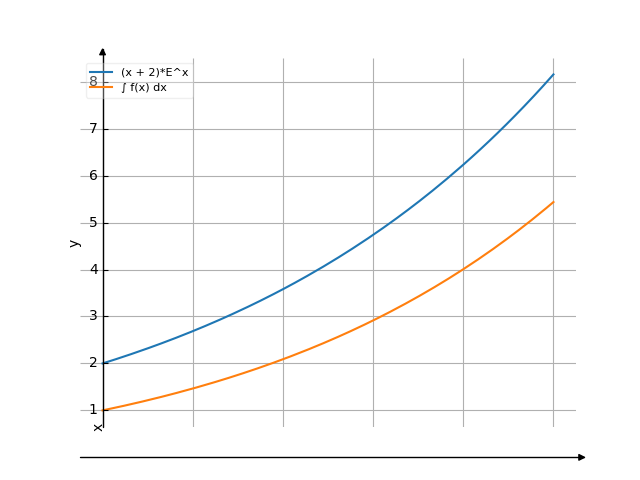Integral of (x+2)*e^x dx
The solution
1 / | | x | (x + 2)*e dx | / 0
Integral((x + 2)*E^x, (x, 0, 1))
-
There are multiple ways to do this integral.
Method #1
-
Rewrite the integrand:
-
Integrate term-by-term:
-
Use integration by parts:
Let and let .
Then .
To find :
-
The integral of the exponential function is itself.
Now evaluate the sub-integral.
-
-
The integral of the exponential function is itself.
-
-
The integral of a constant times a function is the constant times the integral of the function:
-
The integral of the exponential function is itself.
So, the result is:
-
The result is:
Method #2
-
Use integration by parts:
Let and let .
Then .
To find :
-
The integral of the exponential function is itself.
Now evaluate the sub-integral.
-
-
The integral of the exponential function is itself.
-
-
Now simplify:
-
Add the constant of integration:
The answer is:
/ | | x x x | (x + 2)*e dx = C + x*e + e | /

Use the examples entering the upper and lower limits of integration.

![Find the integral of y = f(x) = (x+2)*e^x dx ((x plus 2) multiply by e to the power of x) - with detailed solution [THERE'S THE ANSWER!] (x+2)*e^x](/media/krcore-image-pods/176/hash/indefinite/6/5a/762a0dbd157ba387933397174ef70.png)
 Integral of 1/(2+cosx)^2
Integral of 1/(2+cosx)^2
 Integral of x^4*e^(2*x)*dx
Integral of x^4*e^(2*x)*dx
 Integral of (x-3)^2dx
Integral of (x-3)^2dx
 Integral of (x+2)e^(-x)
Integral of (x+2)e^(-x)